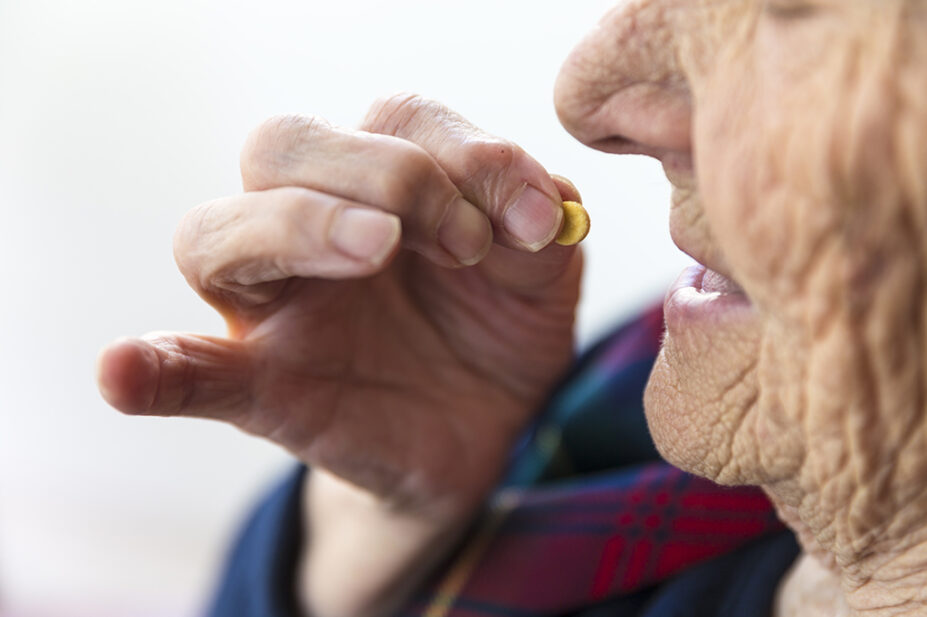
Shutterstock.com
Pharmacist independent prescribers (PIPs) can help to significantly reduce the burden of anticholinergic and sedative drug use in care home residents, a large five-year study, published in the BMJ on 14 February 2023, has concluded.
However, the study intervention failed to demonstrate a reduction in the number of falls; the primary outcome measure of the study.
Researchers recruited 882 care home residents, aged 65 years or over and taking at least one prescribed drug, in England, Scotland and Northern Ireland, to take part in a cluster randomised controlled trial. Participants were randomly allocated to the intervention or control groups.
In the intervention groups, each PIP provided pharmaceutical care to around 20 residents across 1 to 3 care homes, with weekly visits over six months. The PIPs developed a pharmaceutical care plan for each resident, conducted medicines reviews and reconciliation, trained staff, and supported with medicines-related procedures, deprescribing and authorisation of prescriptions.
Overall, 697 falls (1.55 per resident) were recorded in the intervention group at six months, compared with 538 (1.26 per resident) in the control group; however, calculations revealed no statistically significant difference between the two groups.
When looking at drug burden, using the drug burden index — which quantitatively evaluates the exposure of an individual to medications with anticholinergic and sedative activity — the researchers found an improvement in the intervention group.
“Anticholinergic/sedative burden is associated with increased mortality, falls, hip fractures, frailty, and reduced quality of life,” the authors concluded.
After six months, the drug burden index scores decreased overall from 0.72 to 0.66, compared to the control group, where scores worsened, increasing from 0.70 to 0.73. This, the authors said, suggested that “effective deprescribing” had occurred in the intervention group.
“Thus, the significant reduction in Drug Burden Index observed should predict improved outcomes for residents.”
However, they highlighted that the study’s six-month follow-up may have been too short to “fully realise” clinical improvements.
The authors also concluded that regular visits of a PIP to care homes to manage residents’ pharmaceutical care was a “safe, well received intervention”.
David Wright, head of School of Healthcare and professor of health services research at the University of Leicester, and one of the authors of the study, said he was “delighted” that the results of the study had “finally” been published.
“Through a robust randomised controlled study across England, Northern Ireland and Scotland, we have shown that pharmacist independent prescribers can work safely and effectively in care homes, whilst significantly reducing drug burden,” he said.
“Care homes and general practitioners were very positive regarding the service and its impact.
“The focus on effectively integrating into care homes and medical practice teams, combined with individualised training programs using a relatively brief competency framework, contributed to this.”
Wright said that the study results strengthened the argument for a model of care where PIPs, through regular contact and integration into care homes, become the central communication point regarding all medicines-related activities.
Nina Barnett, consultant pharmacist, care of older people, at Northwick Park Hospital, London, said that falls were “multifactorial” and therefore it was “difficult” to do a study that identified the medicines-specific impact on falls.
“This means it is unlikely that a statistically significant difference is seen unless the trial is very large,” she explained.
“In addition, only a third of pharmacy interventions were about medicines and falls, which reduces the possibility of seeing a statistically significant change.
“It is very interesting that they showed a reduction in drug burden index, which in itself is an important outcome for pharmacist prescribers, and future work could focus on how that can contribute to improved overall wellbeing, and perhaps other clinical outcomes, if it were explored further.”


